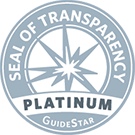Each week we will be featuring the work of a scientist on the cc-TDI team to give you a view into the lab and an update on our progress. While some might argue that the Science Fiction genre is the most imaginative view of the scientific universe, we would argue that some of the actual science happening in our lab might be even more innovative and imaginative…. Hence, we have decided to call this new bog series: Science Nonfiction. If you’re a Science Fiction fan (or even if you’re not), sit back and get ready to learn.
Take it away, Megan…
My current work is investigating the relationship between alveolar rhabdomyosarcoma (aRMS) tumor cells and muscle stem cells, also known as satellite cells. Specifically, I am looking at different chemical signals secreted by cells that encourage aRMS and satellite cells to fuse together.
Most recently, I have been using siRNA to silence genes that we believe direct aRMS cells to fuse to satellite cells. RNA interference is a molecular biology technique that allows me to precisely cleave specific mRNA, thereby reducing or completely inhibiting expression of that gene. After gene silencing in aRMS cells, I have been examining the different ways they interact with satellite cells. In parallel with these experiments, I am examining the cell surface receptors that bind these chemical signals, and how the cells behave when the receptors are blocked.
On the clinical side of my work, I am repurposing an already FDA approved drug and testing it’s efficacy in reducing aRMS metastasis. This drug works by binding to a receptor that is highly expressed in aRMS cells, and our previous published work shows that inhibiting this receptor prevents metastasis in mice. Repurposing a drug that is already approved for a different disease means that if it is effective, we can translate my benchwork into a clinical trial much faster than a treatment that is not already designated safe for humans. I have been testing the drug in aRMS cells and expanded my work to investigate how this drug works in osteosarcoma as well, another rare, deadly pediatric cancer that cc-TDI is searching for a cure for.
All of my exciting work is supported by a federally funded grant from the NIH.


